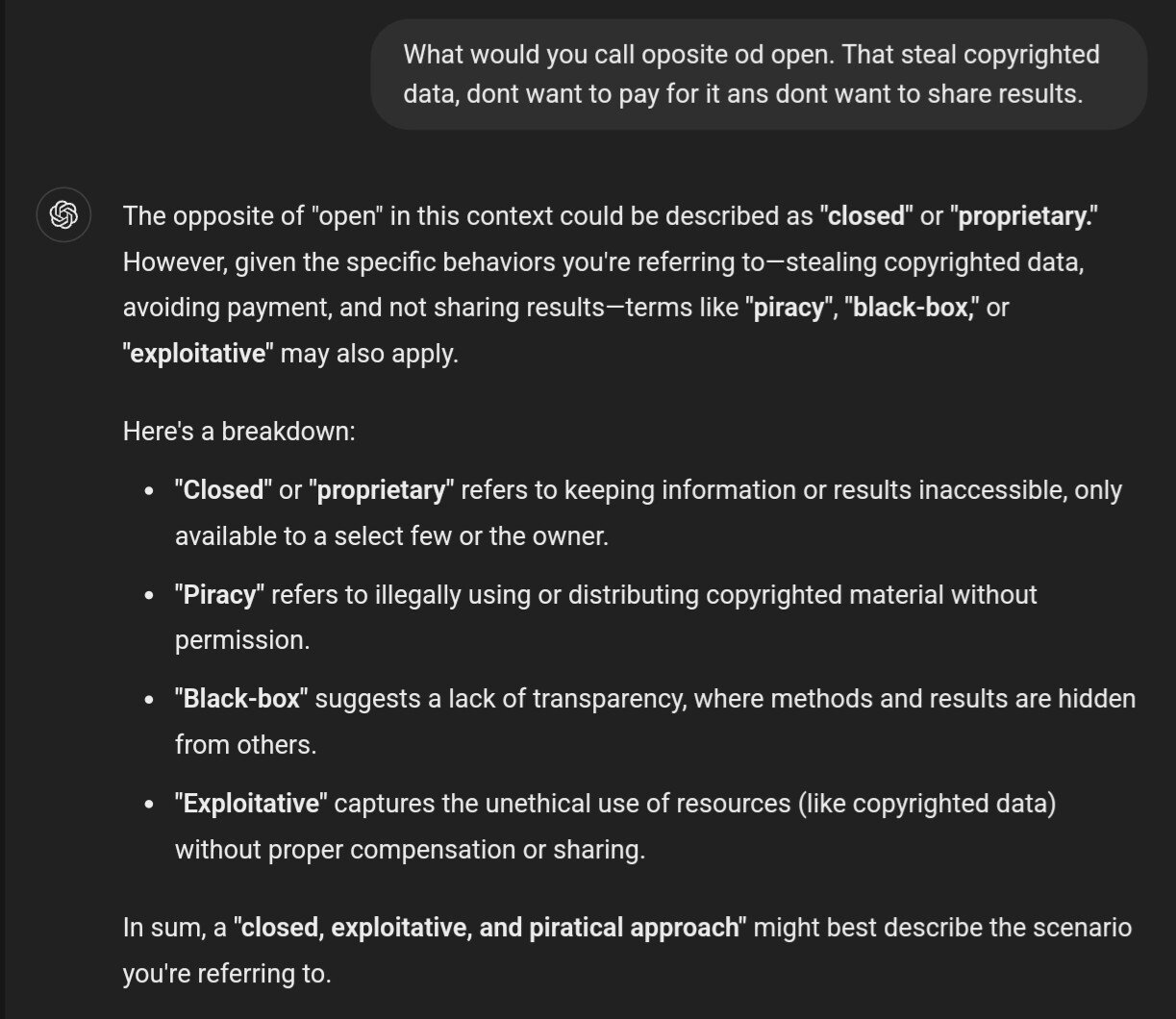No Arch? Strange…
- 0 Posts
- 40 Comments

 7·1 month ago
7·1 month agoHow many already launched?

 3·1 month ago
3·1 month agoYou can use (self hosted) gitlab as a registry storage. We do that locally so we have both code, pipeline and containers in the same place.

 171·1 month ago
171·1 month agoThinking when the “leaving packages before door” will stop (by shops refusing to send it that way due to cost related to stealing)
For VR, if you have a Quest headset and good WiFi, you can try ALVR with SteamVR, it works just fine for me while playing BeatSaber but depending on games your milage might vary.
True, if you have extra money, …
It just ‘feel’ bad/wrong like now Google has a brand that they will quickly kill any project they start.
If you create a good product the market will pick it up, throwing cash at random projects and killing it when it doesn’t make huge profit sounds wasteful.
You mean they throw a lot of money at the wall hoping that something will stick?

 141·2 months ago
141·2 months agoWe should start call them that…
Or maybe more like:
ExploitativeAIorExAIhttps://chatgpt.com/share/66e9426a-c178-800d-a34e-ae4883f70ca0


 91·2 months ago
91·2 months agoBut you have a lot of cold air to cool it down, and on a side note it makes your room warmer which you might want in that cold region 😅
(But the energy savings is hard to argue with)

 5·3 months ago
5·3 months agoDoes it support intro skip?

 4·3 months ago
4·3 months ago10-50 people normal use case?
For KeePass no, for VaultWarden yes.
Just got triggered for the comment above suggesting a solution that doesn’t work for quite a lot of deployments/users, but yes, my comment was a little bit out of place as for single user deployments KeePass is probably way simpler/better.

 3·3 months ago
3·3 months agoTotally agreed, but there are pros and cons.
File - harder to steal but once stolen hacker can bruteforce it as much as it wants. Web service - with proper rate limits (and additional IP whitelist so you can only sync on VPN/local network) - its harder to bruteforce. (But yes, you (sometimes) have also full copy locally in the local client, but …)
If it was only for me I probably would also go with KeePass as you will not update the same db at the same time, but with with multiple users it’s getting unmanageable.
I just got triggered as those CVEs are not that bad due to the nature that the app encrypts stuff on the client side so web server is more like shared file storage, while your answer suggested to switch to a solution that doesn’t work for a lot of people (as we already tried that).

 113·3 months ago
113·3 months agoExplain how can you use KeePass+Syncthing with 10-50 people (possibly different groups for different passwords) having different sets of access level while maintaining sane ease of use?
The passwords are encrypted in the first place so the security for them is only on the client side.

 33·3 months ago
33·3 months agoI call those estimates BS like always, but who knows.
Maybe they should focus on giving people a way to access those legally? Where on that poster campain say where to go? And secondly… They as always still introduce the BS regional locking!

 1·3 months ago
1·3 months ago(No internet =} no download = no failure
You can even host repo mirror locally, that will still work without internet ;)
How to have internet without power?
- Mobile hotspot
- Router and AP using UPS

 7·3 months ago
7·3 months agoJust having btrfs is not enough, you need to have automatic snapshots (or do them manually) before doing updates and configured grub to allow you to rollback.
Personally, I’m to lazy to configure stuff like that, I rather just pick my Vetroy USB from backpack, boot into live image and just fix it (while learning something/new interesting) than spend time preventing something that might never happen to me :)

 181·3 months ago
181·3 months agoIt first downloads all packages from net, then it proceed totally offline starting by verifying downloaded files, signatures, extracting new packages and finally rebuilding initramfs.
Because arch is replacing the kernel and inittamfs in-place there is a chance that it will not boot if interrupted.
This issue was long resolved on other distro.
One way to mitigate it is by having multiple kernels (like LTS or hardened) that you can always pick in grub if the main one fail.

 1·3 months ago
1·3 months agoWhat about a desktop PC?
Linux is slow at killing apps when you run out of memory because it was designed to also run on low spec hardware even if very slowly (making the ui totally unrensposnive) due to swapping.
This comic is about the
killcommand, how Linux kernel is handling force stopping apps vs (old?) Windows when if App frozed it was hard to close it. Now with modern apps and hardware you very rarely see that as most apps are designed to have asynchronous logic that is correctly handled, but it’s still more or less relevant.